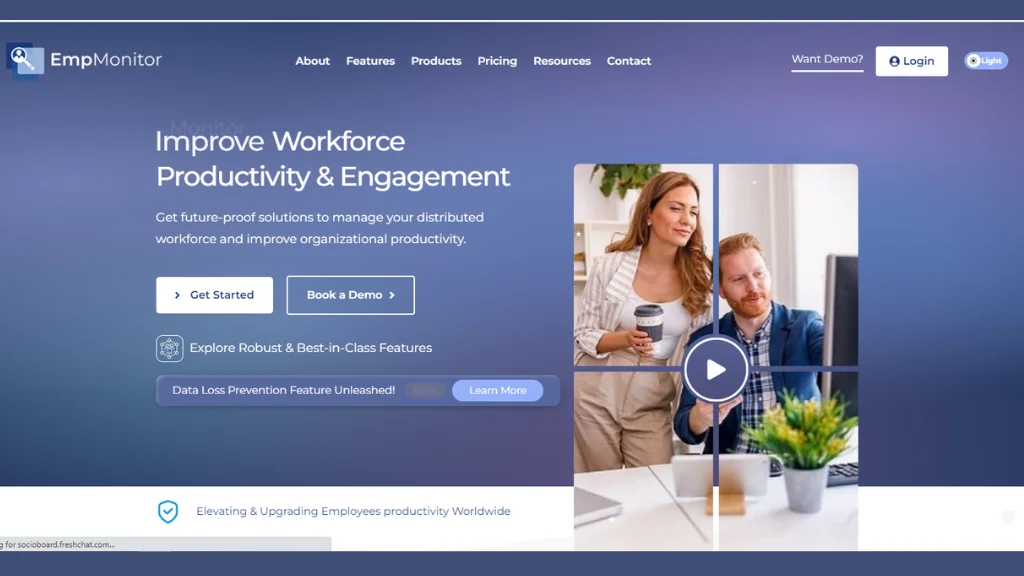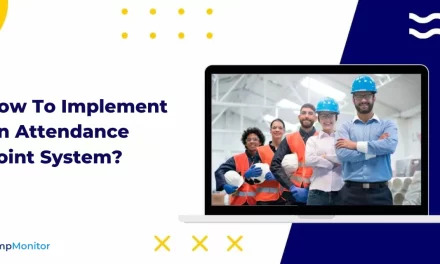Maintaining optimal productivity is quite essential for all organizations seeking sustained success in their business. A critical aspect of this pursuit is the identification and mitigation of suboptimal productivity at the workplace.
Understanding how productivity is measured, the impact of its decline on business, and the tools available for improvement becomes imperative in navigating this challenge.
As businesses grapple with issues such as low employee engagement, lack of clear goals, and inadequate resources, finding solutions becomes increasingly important.
This blog aims to dissect the intricacies of low productivity, employing the workforce productivity enhancing formula as a lens to evaluate efficiency.
Additionally, we will explore the far-reaching consequences of diminished productivity on a business, offering insights into the tools, that can effectively elevate workforce efficiency.
In a hurry? Listen to the blog instead!
How to Measure Productivity
Before delving into the causes and solutions of low productivity, it’s crucial to understand how productivity is measured. Productivity is a measure of the output per unit of input over a specific period. The two primary inputs in a workplace are time and resources, while the output is the completed tasks or projects. To measure productivity metrics, one can use the labor productivity formula.
Labor Productivity Formula
The labor productivity formula is a simple yet effective way to quantify the efficiency of a workforce. The formula is:
Labor Productivity=Total Output/Total Input
This formula helps businesses assess how effectively their employees are using their time and resources to generate output. Now, let’s explore the reasons behind low productivity at work.
Reasons for Low Productivity at Work
Here are some of the key factors that hinder workplace productivity:
Low Employee Engagement
Employee engagement plays a pivotal role in productivity. When employees feel disengaged, their motivation levels plummet, resulting in decreased productivity. Lack of engagement in their tasks and a disconnect from the company’s goals can lead to a decline in overall performance.
Lack of Clear Goals and Expectations
If employees are unclear about their roles, responsibilities, and the expected outcomes of their work, it can lead to confusion and a lack of direction. Clearly defined goals and expectations provide employees with a roadmap, fostering a sense of purpose and accountability.
Inadequate Training and Resources
Insufficient training and a lack of necessary resources can hinder employees from performing at their best. When the employees lack the right skills or tools, it negatively impacts their efficiency and leads to low productivity.
Poor Work-Life Balance
An imbalance between work and personal life can contribute to stress and burnout, affecting an employee’s ability to focus and deliver quality work. The productivity and job satisfaction of the employees in organizations that prioritize a healthy work-life balance often improve.
Ineffective Communication
Communication breakdowns within a team or organization can lead to misunderstandings, delays, and errors. Clear and open communication channels are essential for ensuring everyone is on the same page, enhancing collaboration and productivity.
How Does Low Productivity Impact the Business?
The repercussions of low productivity are far-reaching and can have a significant impact on a business. Here are some ways in which suboptimal productivity can negatively affect an organization:
Increased Costs
Suboptimal productivity often results in inefficiencies, leading to increased costs. Projects may take longer to complete, and errors may necessitate additional resources for correction. This can strain the company’s budget and hinder its financial growth.
Missed Deadlines
Productivity issues contribute to missed deadlines, damaging a company’s reputation and relationships with clients. Consistently failing to meet project timelines can result in the loss of business opportunities and clients.
Reduced Employee Morale
A work environment characterized by low productivity can create a negative atmosphere. Frustrated employees may become disheartened, leading to a decrease in overall morale. This, in turn, can create a cycle of even lower productivity and engagement.
Quality of Work
Suboptimal productivity often correlates with a decline in the quality of work produced. Rushed tasks and a lack of attention to detail can result in errors and subpar outcomes, impacting the overall quality of the products or services offered by the company.
Tools to Improve Productivity
To tackle the challenge of low productivity, businesses can harness the power of advanced tools, with EmpMonitor standing out as a potent solution.
It is an employee productivity monitoring tool, that plays a pivotal role in providing organizations with actionable insights into how their workforce allocates time and resources.
Time Tracking Software
EmpMonitor’s time-tracking capabilities empower employees to log their working hours accurately. Simultaneously, managers gain a comprehensive overview of task-specific time allocation, enabling them to pinpoint areas where time efficiency can be improved.
Project Management Tools
Within the EmpMonitor framework, project management features facilitate seamless collaboration and task management. Offering a centralized platform for project-related communication and task assignments, these tools enhance efficiency and maintain organizational focus.
Employee Engagement Platforms
EmpMonitor extends beyond mere monitoring by incorporating employee engagement features. Through recognition mechanisms, feedback loops, and effective communication tools, it fosters an ideal work environment, directly contributing to heightened productivity.
Leveraging EmpMonitor as a comprehensive productivity management solution underscores the significance of targeted tools in addressing workforce efficiency challenges. By integrating this tool, businesses can strategically overcome low productivity and create an environment conducive to success.
Some other perks of using EmpMonitor are:
- Preventing Data Loss: With advanced features, EmpMonitor lets you stop unauthorized access to websites and control usage. It blocks websites and apps and detects USB usage, preventing data leaks and unauthorized access.
- Location Tracking: Our Geo-location tracker helps you monitor where your employees are, which is convenient for overseeing remote work and complying with location-specific rules. This is especially important for construction time tracking.
- Data Protection: Keeping your company’s data safe is crucial. EmpMonitor uses strong encryption and access controls to protect your data from theft and breaches.
- Attendance Keeping: EmpMonitor is a best attendance tracking software. It makes payroll a breeze and ensures everyone is accountable at work.
Also Read
9 TOOLS TO BOOST TEAM PRODUCTIVITY AND EFFICIENCY
How to Increase Productivity at Work
Some tips to increase productivity are:
Prioritize Employee Engagement
Actively engage employees by involving them in decision-making processes, recognizing their achievements, and fostering a positive work culture. A motivated and engaged workforce is more likely to help in overcoming low productivity.
Set Clear Goals and Expectations
Communicate the goals and expectations for each role within the organization. This provides employees with a sense of purpose and direction, enabling them to align their efforts with the company’s objectives.
Invest in Training and Development
Ensure that employees have the necessary skills and resources to excel in their roles. Regular training sessions and opportunities for professional development contribute to an empowered and capable workforce.
Promote Work-Life Balance
Encourage a healthy work-life balance by offering flexible work arrangements and promoting wellness programs. A well-rested and balanced workforce is more likely to approach tasks with focus and energy.
Enhance Communication Channels
Foster open and transparent communication within the organization. This includes regular team meetings, feedback sessions, and the use of collaboration tools to ensure that everyone is well-informed and aligned.
Provide Recognition and Incentives
Recognize and reward employees for their hard work and accomplishments. Incentives, whether monetary or non-monetary, can boost morale and create a positive working environment.
Conclusion
Addressing low productivity is a multifaceted challenge that requires a combination of strategic planning, employee engagement initiatives, and the use of productivity tools.
By understanding the causes of lack of employee engagement and implementing targeted solutions, businesses can create a more conducive work environment that promotes efficiency, collaboration, and overall success.
Businesses must recognize prioritizing productivity and take proactive steps to address any underlying issues.
Whether through employee engagement efforts, clear goal-setting, or the adoption of team productivity-enhancing tools, the journey to improved productivity begins with a commitment to creating a positive and conducive work environment.
















